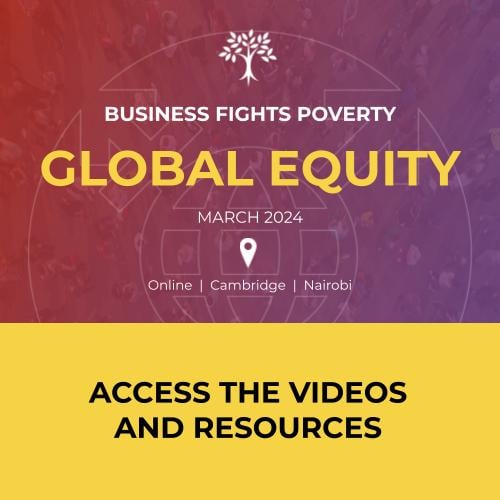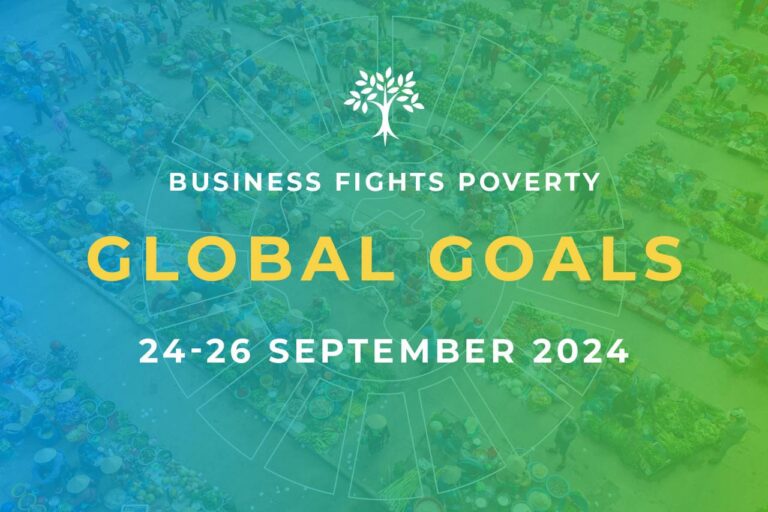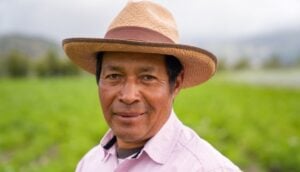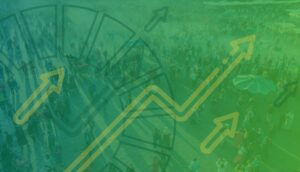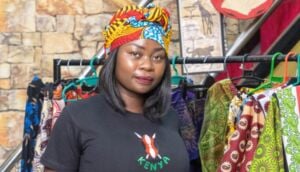Climate change and inequality are two of the biggest challenges of our time. Tackling one without the other is increasingly seen as not an option, including for business. The Business and Climate Justice Framework helps businesses identify both the opportunities of putting people at the centre of their climate ambitions and the risks of inaction.
Speaking ahead of last year’s COP26 UN Special Envoy Mark Carney stated that “Achieving net zero emissions will require a whole economy transition – every company, every bank, every insurer and investor will have to adjust their business models”.
There is no doubt that businesses increasingly recognise that a failure to adapt to climate change means they will fail to exist. More and more companies are joining the Race to Zero and the Science Based Targets Initiative and are striving to lower their emissions, but, to quote Dr Tara Shine, “there is a danger that by only thinking in terms of gases and science we fail to recognise that climate change is fundamentally about people”.
People have caused climate change, and people need to find urgent solutions to fix climate change. Climate change’s impact on people is also unfair and unjust. The latest UN climate change report made clear that 40% of the world’s population is currently ‘highly vulnerable’ to climate change impacts – and most of them live in places least responsible for causing climate change. The recent floods in Pakistan for example, affected 60-80% of one cotton growing area, destroying the livelihoods of the many thousands of farmers that depend on the crop, and threatening global supply chains.
Climate change and inequality are two of the biggest challenges of our time. Tackling one without the other is increasingly seen as not an option, including for business. As Lisa Manley from Mars has written ‘As we progress our Net Zero Commitment and our Cocoa for Generations plan it is becoming clear that the two issues are inextricably linked’.
However, few resources currently exist to help companies identify and measure the social impacts of their climate commitments. This is why Business Fights Poverty, Change By Degrees and the Corporate Responsibility Initiative at Harvard Kennedy School have collaborated to develop further our Business and Climate Justice Framework, first published in March 2021. We have drawn from the experience shared by the Business Fights Poverty community at a series of events at COP26 and beyond. The Framework aims to help businesses identify both the opportunities of putting people at the centre of their climate ambitions and the risks of inaction.
If any of the following questions resonate this tool could help you:
- Are you a company working out how to ensure your scope 3 emissions reduction plans in supply chains can benefit smallholder farmers?
- Are you a company that has ambitious circularity or recycling ambitions and thinks there might be an income generation opportunity for waste pickers alongside it?
- Are you a company reliant on transition minerals that enable green technology like lithium for batteries or platinum for solar panels, but worried about human rights abuses in the regions where they are sourced?
- Are you a company whose technology can benefit people experiencing climate-related emergencies but are not reaching those most impacted?
And if none of the above resonates, fear not; the tool will help identify where climate and social issues intersect – because they always will. In our experience of using the tool with companies, it has helped uncover previously undiscovered opportunities to collaborate across environmental and social teams and beyond.
The framework can be visualised as a 3×7 axis. On one axis sit the three spheres of influence a business can use, a framework developed by Jane Nelson at Harvard Kennedy School: core business (including operations and supply chains), philanthropy (including community investments), and policy influence. On the other axis sit the 7 main principles of climate justice, which are based on the Mary Robinson Foundation principles but have been adapted for a business audience. Unpacking the concept in this way has helped companies understand the term and how it is applicable across the business. And, by taking a comprehensive look across the business it can help identify where and why climate justice is of material importance to a company.
The seven principles include the following and are illustrated with different examples:
- People-centred approach: Are commitments to human rights connected to the company’s commitment to climate action / the environment, such asrights and labour standards in supply chains, including hardware circularity and transition minerals? For example, Anglo American have, for the first time, been independently audited against the IRMA Responsible Mining Standard at the Unki Platinum Mine in Zimbabwe. The process puts a strong emphasis on gathering the inputs of local stakeholders and, through this process, has built more trust amongst the consumers of their minerals.
- Just transition: Are company net zero transition plans considerate of jobs lost or created for people most vulnerable to the impacts of climate change? Are employees involved in planning the company’s transition away from carbon and toward resilience? Are employees protected and enabled to cope with the transition? How is the company levelling the playing field (such as providing equal access to technology and skills) in impacted communities? For example, Italian energy company Enel established a global framework agreement with international and Italian unions which included apprenticeships to transfer knowledge and retrain and redeploy staff.
- Share burdens and benefits fairly: Are company commitments to using renewable energy/water conservation also able to reach impacted communities? Are carbon credits schemes reaching the most vulnerable and is there oversight? Are there co-benefit practices being implemented in communities within supply chains? Are steps being taken to minimise the costs of climate action on those with the least ability to pay? For example, Natura participates in ‘Benefit Sharing’, a legal mechanism from Brazil’s environmental ministry that requires companies to share the economic benefits with Amazonian communities.
- Participation, transparency, and accountability: How are the company’s policies and products informed by the needs of people most affected by climate change? How can products enable greater participation in finding solutions for those most impacted and how are the company’s users that are causing harm being held to account? How are commitments and actions made transparent to customers, clients, suppliers, etc.? For example, Patagonia’s Action Works programme is an activist as well as a grant-making platform, connecting customers with local grassroots initiatives focused on climate and environmental justice.
- Diversity and inclusion: Are people’s different vulnerabilities to climate change recognized (employees, suppliers, communities). Can you reach more diverse and climate-vulnerable suppliers, consumers, and employees? – e.g. can you use procurement policies to reach more diverse and climate-impacted groups? E.g. Starbucks leverages employee resource groups such as Partners for Sustainability, the Black Partner Network and the Indigenous Partner Network to provide opportunities to learn about climate justice through the voices of frontline workers, NGOs, and government leaders.
- Education and skills: How is the company educating employees, users or consumers and communities about climate change, equity and rights? How is it investing in ensuring employees and suppliers have the skills needed for the just transition? For example, Wipro works with water-stressed communities and regions near its operations. It provides capacity building to traditional well diggers and farmers and runs the largest environmental education programme in India.
- Partnership: What partnerships are in place to advance climate justice? (CSR, supply chain, NGOs, employee groups, communities) Verizon launched a Climate Resilience Prize in partnership with GreenBiz and the Adrienne Arsht-Rockefeller Climate Resilience Center. The prize awarded $500,000 to help scale proven, in-market solutions that are focused on mitigating the disproportionate impacts of climate change in vulnerable communities.
By assessing themselves against the framework, a company can better understand what they are and are not doing on climate justice and where they can add real value. No one principle is inherently ‘better’ than another, and a company is not expected to be undertaking actions against each principle. Rather, it is the combination of activity and the intent behind it that determines whether, as the accompanying diagnostic tool shows, you are a Beginner, Learner or Leader. As yet, despite a lot of encouraging progress by companies including through initiatives that focus on integrating a social element, such as ‘Transform to Net Zero’, we are unaware of any ‘leaders’.
Hopefully, it is only a matter of time before initiatives like the Task Force on Climate-Related Financial Disclosures integrate social dimensions. And as analysts have noted, more regulated and consistent ESG reporting is accelerating globally. By applying the Climate Justice Framework, companies will be on the front foot when agreed metrics become a reality.
If you’d like to find out more about Business and Climate Justice, I invite you to join the Business Fights Poverty community at a series of interactive hybrid workshops during COP27. Our Climate Justice Summit, 9-10 November 2022, is broadcasting live from Sharm-El-Sheikh and Cairo. We’ll explore what more we can do to drive partnerships and solutions for climate justice: how we can apply a social equity lens to climate thinking and action. We’ll be bringing together experts and practitioners from business, government and civil society to share the latest thinking on what’s working, and what’s not, and to make important new connections to drive action. Register to join us online, and apply for a place to join us in person.

